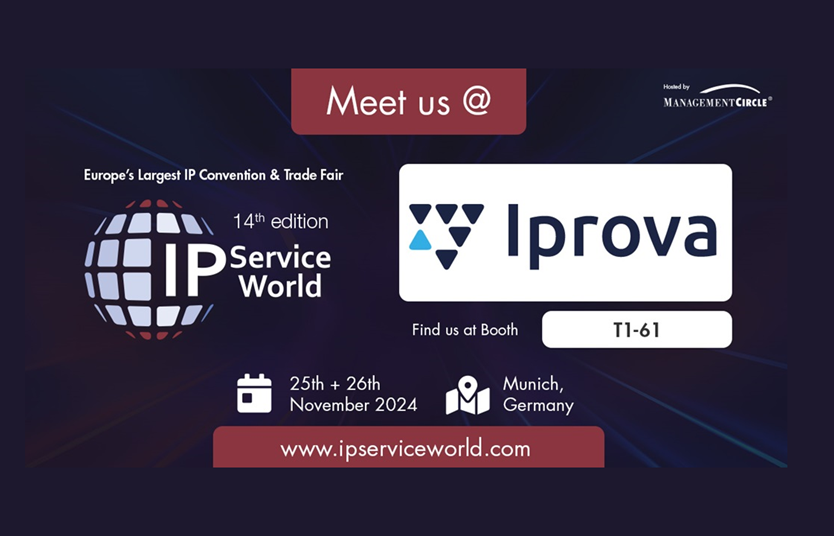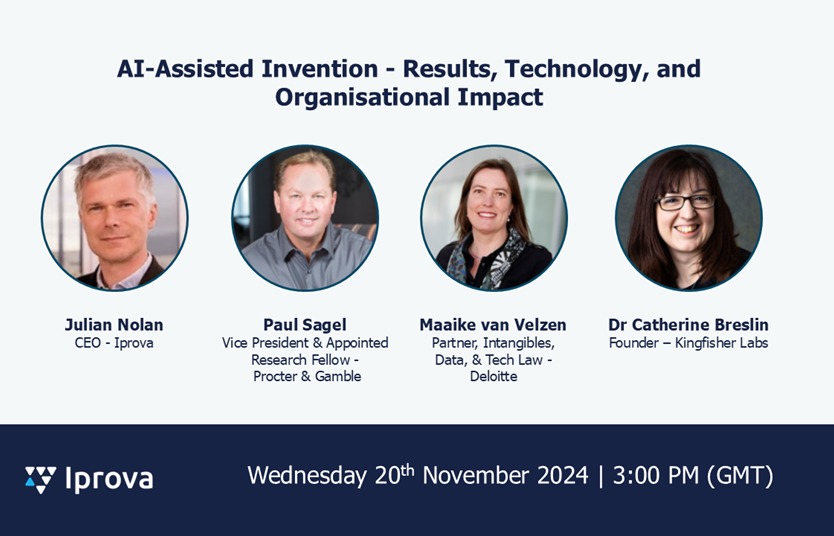Iprova’s Chief Invention Officer, Dr Chris Wright, looks at the lessons learned from creating over 3,000 inventions….
After carrying out an activity more than 3,000 times over the space of ten years, it is fair to assume that a) You are pretty good at it; b) You can spot patterns and trends; c) You would have a good insight into how the process could be improved. While this does not always hold true (in the case of one of my neighbours and parking straight / close to the kerb, for example!), it is certainly the case at Iprova when we look at inventions. As a company whose whole ethos is around making something more data-driven for our clients, we also take a data-driven approach to our own activities, you will be pleased to learn.
So, what have we learned from creating c 3,000 inventions for our clients over the past 10+ years? Firstly, somewhat counter-intuitively, the proportion of breakthrough inventions and discoveries has declined steadily over the last c.50 years. This is because a surfeit / over-supply of information is harming innovation by encouraging scientists and inventors to only have time / inclination to look at information in their core domains of expertise. This “burden of knowledge” is making “traditional” (i.e., making connections between cross-pollinated pieces of information by chance) more difficult, thus tending to restrict invention. In other words, to invent and capture the best future strategy, you need:
- The state of the art in your field (Experts know this, if they are good)
- The market / customer landscape and emerging product needs (Sales and marketing departments should know this)
- An understanding of prior art and patentability (An IP department should know this)
- The coming technological disruptions that are emerging outside your field (People outside your company will know this)
The previous impossibility of bringing this all together reliably is one of the founding reasons for building a data-driven invention platform and why companies approach us. Almost everyone knows that the quantity of information in the world is rising dramatically and inexorably, which will only make things worse. However, beneath that over-riding driver are a host of other reasons for companies to approach us. The main ones are:
- Develop patentable inventions which underpin a new business plan.
- Develop new products – “something we can build and implement now”.
- Protect the future against disruption from competitors.
- Find ways to work around competitor’s / competitors’ IP.
- Create standards-essential patents.
- Make improvements to a product.
Through fulfilling many of each of these goals with invention, we have learned these five key lessons:
- There are many varieties of invention which each require different underlying creative processes and these are shared across all technical domains.
- The creative logic used in the invention must be matched to the desired output invention types.
- The most satisfying and valuable inventions are created through cross-pollination between domains.
- To capture the most valuable ideas for the future, you have to be fast and you have to know the right information. Resources to develop new inventions follow where the greatest potential future value lies. As a result, greater resources are applied to the areas with greatest potential and so the speed of invention is increased.
- Disruptive possibilities require effort to spot, unless you are shown how distant information can be relevant.
This knowledge and understanding are only valuable if they are applied to making the whole process better. This is precisely what we do at Iprova. While there are no easy short cuts, we are constantly fine-tuning both our internal processes and, critically, our Invention Studio invention platform. With the sheer quantity of data and information growing constantly, we need to continually evolve so that we can still invent quickly and efficiently to enable us to meet our customers’ needs.
Looking into the future is not easy. As our CEO, Julian Nolan, is fond of saying “The world will never again change as slowly as it has done today”. In 2020, we predicted that 50% of all inventions would be made with the help of AI by 2025. At the time, people were sceptical, but now, in part due to the increasing awareness of new types of AI technologies, they increasingly support our prediction. However, it is absolutely vital to emphasise the “with the help of” aspect of that prediction. We are reaching new horizons with the speed, efficiency, breadth and accessibility that the new version of our invention platform, Invention Studioevo, brings. But it is still absolutely true to our central aim of using AI to amplify, rather than in any way replace or substitute for, human creativity. That human element should never be lost.
Looking to the future, we think that:
- Innovating and invention will become a much more reliable process which can be integrated and invested in at a much more strategic level.
- Tools and the agile processes which they enable will enable the systematic and robust creation of inventions – creating defined outcomes on time and to budget.
- The integration of tools which ensure that ideas are good right from their inception into the invention process within companies will improve the quality and value of patents.
- The pace of change that large organisations are capable of will increase.
- Companies which integrate such tools will outperform others who do not adopt them, due to their ability to invent much faster and more disruptively at scale.
- We will continue to find new ways of augmenting human creativity using new technologies. The consequences of this advance in the process of solving problems have only just begun to be realised.
More from our feed
Join us at IP Service World in Munich!
Read more
Webinar: AI-Assisted Invention – Results, Technology and Organisational Impact
Read more
Iprova welcomes Duane Valz to Advisory Team
Read more